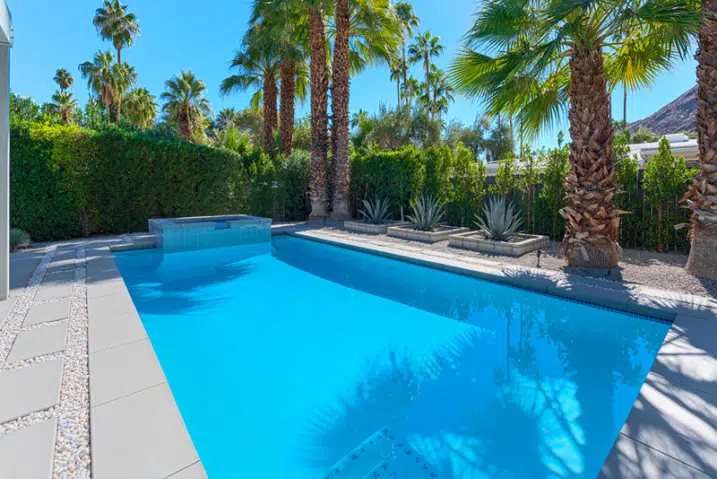Often we are asked if the palm tree planted near a swimming pool could cause problems. A very sensible question of course. To better answer this question we immerse ourselves in the root world of the palm tree!
The root system
Palms are monocotyledons and therefore have a different root system than hardwoods. Consequently, not only the planting of the palm tree is different, but also the development of the root ball.
Already at the moment of germination the young shoot behaves differently. The seed produces a radicle and the coleoptile that will produce the first leaf. At the foot of the coleoptile roots are formed to straighten the coleoptile and anchor it in the soil. Then roots develop with different functions according to their location and depth. The root ball, or rhizosphere, is divided into 4 zones.
Zone I
Breathing zone. A zone not deeper than 25 cm and that extends until 50 cm from the stipe. Here we find primary and secondary roots, gravi-tropes. In other words, the gravity leads them downwards. In this zone we also find the collar (the part between the stipe and the roots) and the tuber.
Zone II
The feeding zone. The largest and densest part of the rhizosphere. This zone is located between 90 and 150 cm deep and extends to the width of the crown.
Zone III
The absorption zone. The development of this zone depends strongly on the species and the level of groundwater. Normally this zone is between 150 and 180 cm deep. This zone contains mainly primary roots and is much less dense than zone 2. As in zone 2, the absorption is done by the rootlets.
Zone IV
The development of this last zone depends entirely on the groundwater level. In areas with a very high water level one can hardly distinguish zone a from zone 3.
Adventitious roots
After a few years roots can appear on the surface at the foot of the palm. This gives the impression that the palm is growing out of the ground, but in fact they are simply additional roots that have grown out of the stipe to strengthen the foot of the palm.
Planting next to the pool/pond?
What is the answer? Can you plant your palm tree next to the pool or pond? Yes! The roots of the palm tree are not aggressive and will in principle seek the path of least resistance. “In principle” assuming that the palm tree is not planted on impenetrable soil of course! If you are not yet convinced, just leaf through a travel catalog to see all these palm trees planted on small islands in the middle of the pool! Here the chlorinated water of the pool is a much more real concern than the development of the roots.
Pruning the roots
For potted palms, the location may become too small for the root ball size. In this case the palm will either grow out of the pot or break the pot altogether. Some species, such as Phoenix, Washingtonia, Sabal,… can withstand root pruning relatively well. By cutting off part of the rootball, the palm will fit back into its pot.


